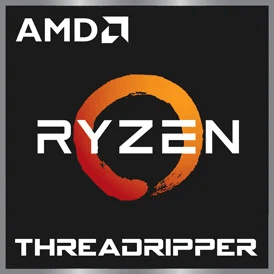Intel Core i7 13700K vs Intel Xeon w3 2425
We compared the desktop Intel Core i7 13700K with 16 cores 3.4GHz and the server Intel Xeon w3 2425 with 6 cores 3GHz . You will find out which processor performs better in benchmark tests, key specifications, power consumption and more.
Main Differences
Intel Core i7 13700K 's Advantages
Integrated graphics card
Higher specification of memory (5600 vs 4400)
Higher base frequency (3.4GHz vs 3GHz)
Larger L3 cache size (30MB vs 15MB)
Lower TDP (125W vs 130W)
Intel Xeon w3 2425 's Advantages
Newer PCIe version (5 vs 5.0)
Score
Benchmark
Geekbench 6 Single Core
Intel Core i7 13700K
+47%
2943
Intel Xeon w3 2425
2000
Geekbench 6 Multi Core
Intel Core i7 13700K
+132%
20188
Intel Xeon w3 2425
8701
General Parameters
Sep 2022
Release Date
Feb 2023
Intel
Manufacturer
Intel
Desktop
Type
Server
x86-64
Instruction Set
-
Raptor Lake
Core Architecture
Sapphire Rapids
i7-13700K
Processor Number
-
LGA-1700
Socket
Intel Socket 4677
UHD Graphics 770
Integrated Graphics
N/A
-
Generation
Xeon W (Sapphire Rapids)
Package
10 nm
Manufacturing Process
10 nm
125 W
Power Consumption
130 W
253 W
Max Turbo Power Consumption
-
100°C
Peak Operating Temperature
64 °C
-
Foundry
Intel
CPU Performance
8
Performance Cores
-
16
Performance Core Threads
-
3.4 GHz
Performance Core Base Frequency
3 GHz
5.3 GHz
Performance Core Turbo Frequency
4.4 GHz
8
Efficiency Cores
-
8
Efficiency Core Threads
-
2.5 GHz
Efficiency Core Base Frequency
-
4.2 GHz
Efficiency Core Turbo Frequency
-
16
Total Core Count
6
24
Total Thread Count
12
100 MHz
Bus Frequency
100 MHz
34x
Multiplier
30.0
80 K per core
L1 Cache
80 K per core
2 MB per core
L2 Cache
2 MB per core
30 MB shared
L3 Cache
15 MB
Yes
Unlocked Multiplier
No
-
SMP
1
-
AVX-512 FMA Ports
2
Memory Parameters
DDR5-5600, DDR4-3200
Memory Types
DDR5-4400
192 GB
Max Memory Size
2 TB
2
Max Memory Channels
4
89.6 GB/s
Max Memory Bandwidth
-
Yes
ECC Memory Support
Yes
Graphics Card Parameters
true
Integrated Graphics
-
300 MHz
GPU Base Frequency
-
1600 MHz
GPU Max Dynamic Frequency
-
256
Shader Units
-
16
Texture Units
-
8
Raster Operation Units
-
32
Execution Units
-
15 W
Power Consumption
-
0.78 TFLOPS
Graphics Performance
-







